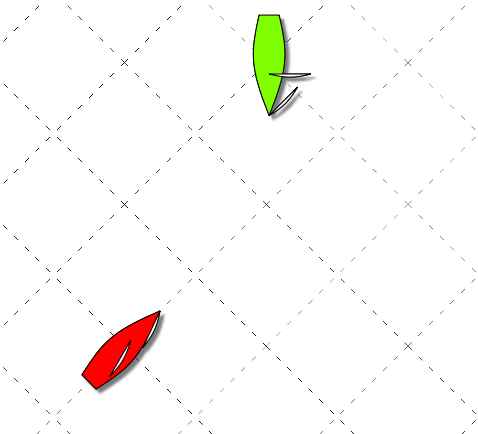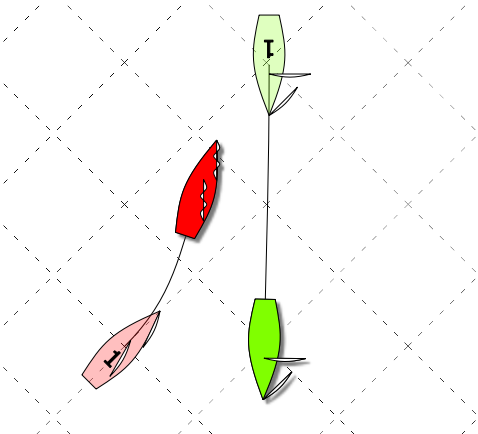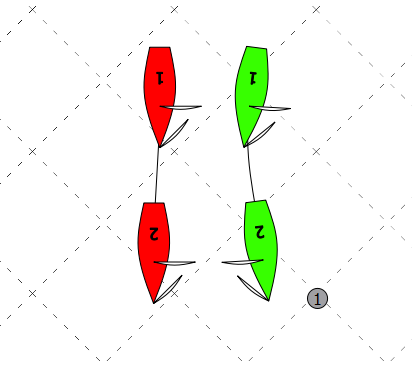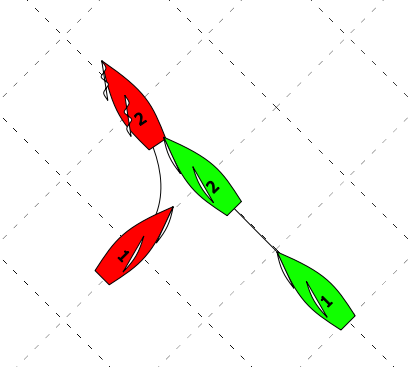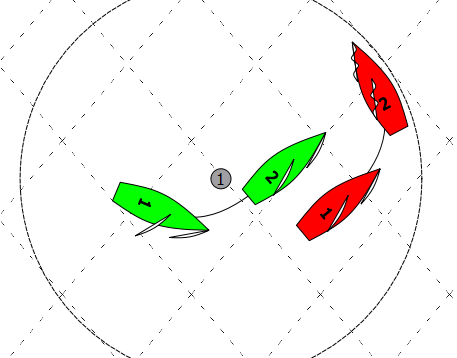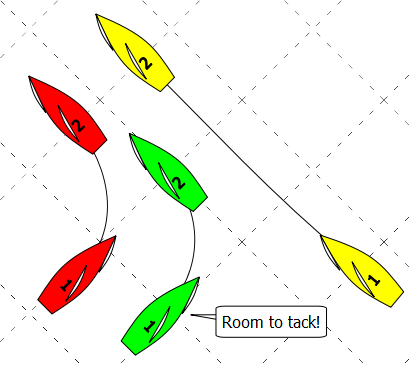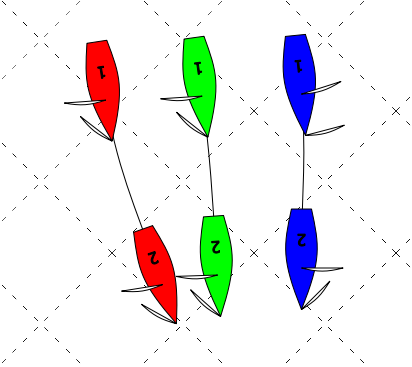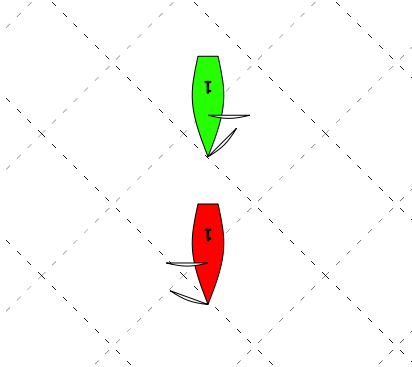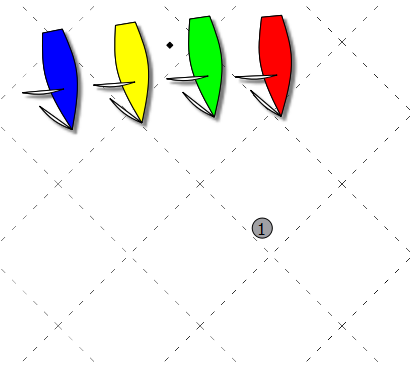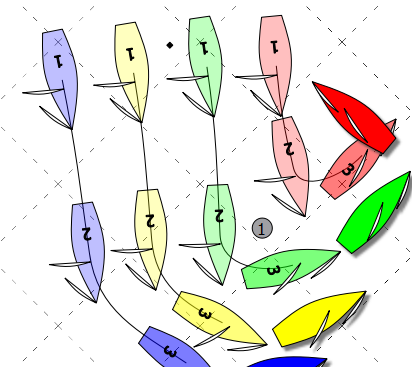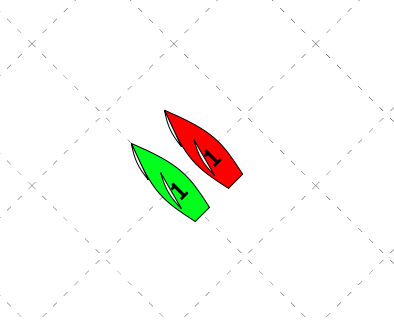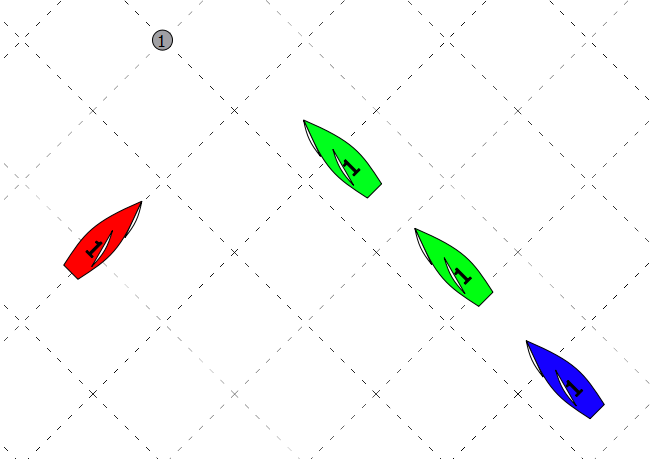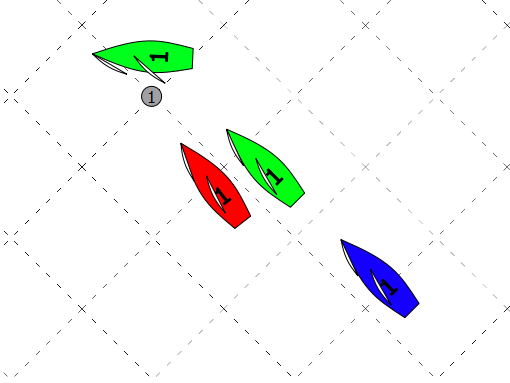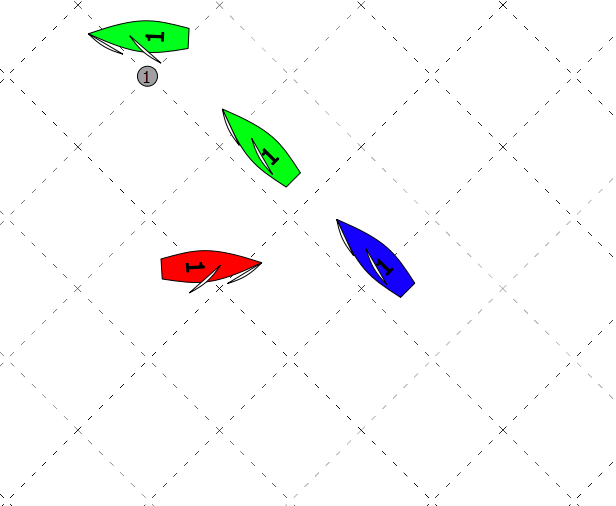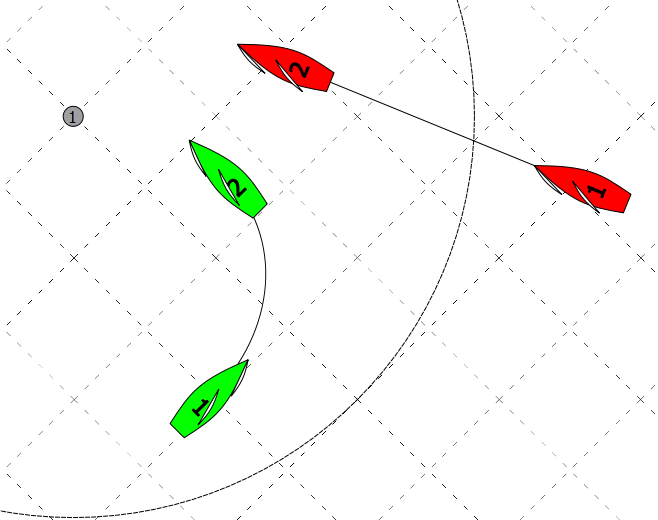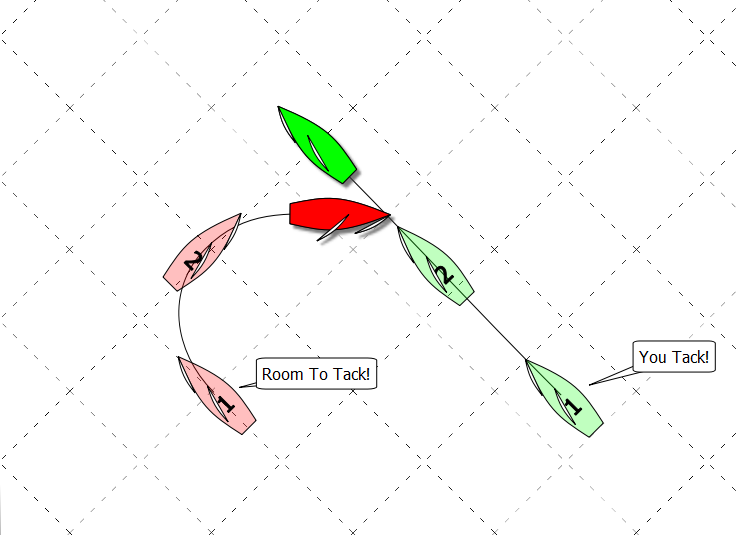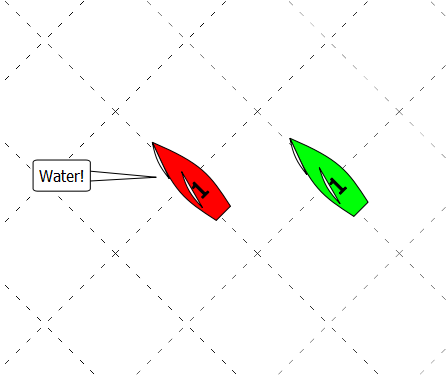| Green and Red are approaching a leeward gate. Both have decided to turn left. Green is well behind Red when Red enters the zone. Red sails past and wide of the mark but still in the zone before turning up. Red on port tack sails into Green on starboard tack inside the zone. The gate was within meters of the skippers on land and easily visible. Who was at fault?
Red violated Rule 10. Red did not enjoy the protection of Rule 18 at that time.
Green was required to give Red "mark room" (RRS definition). "Mark room" is defined as the "room" (RRS definition) needed to sail to the mark and to round and leave the mark without touching it (see RRS definition of "mark room"). "Room" (yet another RRS definition) is the space a boat needs in the existing conditions while maneuvering promptly in a seamanlike way.
This gate was close to shore right in front of the skippers, so a seamanlike rounding would see Red sailing straight to the mark and rounding it tightly. Red did not do that and at that point Rule 18 does not apply because Red is sailing outside her "mark room". When Red turns up she is trying to get back to her mark room, but she violates Rule 10 by sailing into a starboard tack boat while on port tack before reaching her mark room and will not be exonerated by Rule 43.1(b).
As this was a gate, Green was not limited by Rule 18.4.
The key point here is that Rule 18 only protects a boat sailing in her "mark room", no matter how much in front she was when she entered the zone. That "mark room" is a lane straight to the mark and the space needed to round it, no more.
It is also worth noting that Rule 18 or applicable definitions do not say "keep clear" (RRS definition) at any point. |
